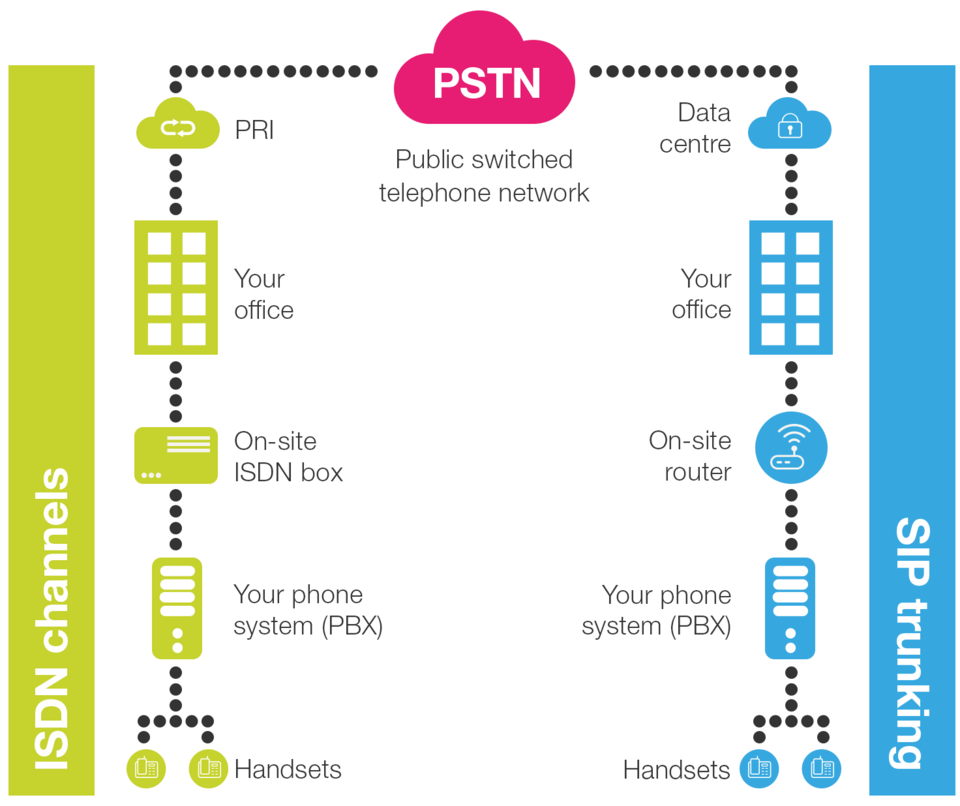
In the last few years, there’s been a noticeable drop in businesses choosing ISDN (Integrated Services Digital Network) as their go-to phone line. In fact, over 300,000 ISDN channels were lost over the past years! But why are so many businesses switching to SIP? As you should already be aware, in September 2015, BT announced the service dead with a shut-off date of 2025.
What is ISDN?
ISDN (Integrated Service Digital Network), is the original high-speed internet service. It sparked the high-speed internet development between service providers during the 1990’s and, of course, revolutionized internet use. Much like its predecessor, the dial-up internet service, ISDN utilizes a phone line. In fact, it set the standard for telephone data service.
What is SIP trunking?
SIP trunking is a type of technology that lets you make calls over a data connection. With SIP trunking you just need an internet connection and a phone system. No phone line. Calls are translated into data ‘packets’ and sent over your data network.
Learn more about SIP trunking here.
Which is right for my business?
Let’s discuss some of the features of each system to help you make an informed decision.
Upscaling:
SIP trunking
Firstly, The number of SIP trunks is determined by the bandwidth of the data network. Scaling up can be done easily as a configuration change. As the new trunks are virtual, you don’t need any new hardware for the phone system.
ISDN
Each ISDN line has a limit on the maximum amount of voice channels: 2 channels for ISDN2; 30 for ISDN30. Scaling up can be costly and time-consuming. You may need a new line if the maximum channels are already in use. You may also need new hardware for the phone system.
Back up and continuity:
SIP trunking
In the event of the data network failing, calls can be directed to back up sites (or mobiles).
ISDN
Backup circuits are physical and can be expensive. Call routing can be expensive.
Productivity:
SIP trunking
SIP trunking can include productivity features (such as call management and online portals) and unified communications integration (like call recording and CRM).
ISDN
Productivity and unified communications are limited, and often only enabled by the phone system rather than the ISDN.
Cost:
SIP trunking
Most notably, SIP trunks are generally cheaper, but there may need to be an investment in the data network or phone system.
ISDN
ISDN channels can be expensive to increase capacity and traditional phone systems can be costly to maintain.
Quality of service:
SIP trunking
Quality has improved significantly and many providers guarantee voice quality.
ISDN
ISDN is very reliable and has a high level of quality of service.
You should consider choosing SIP trunking if:
- You’re upgrading your phone system and/or internet connection and want to receive cost savings
- You want an element of backup and resiliency
- You’re looking for want enhanced productivity features and integration with other services
- You want to be able to quickly and easily upscale their voice channels

